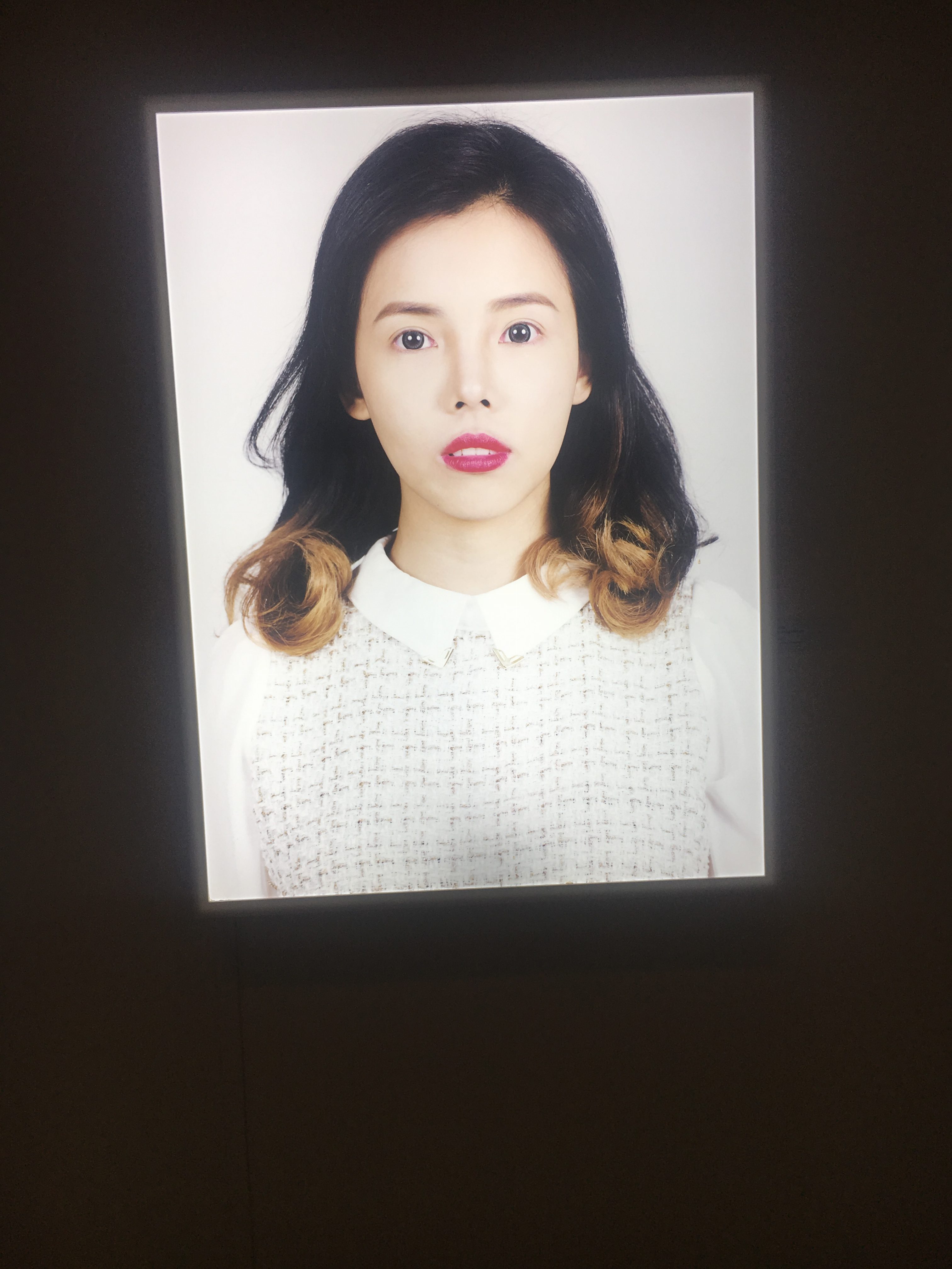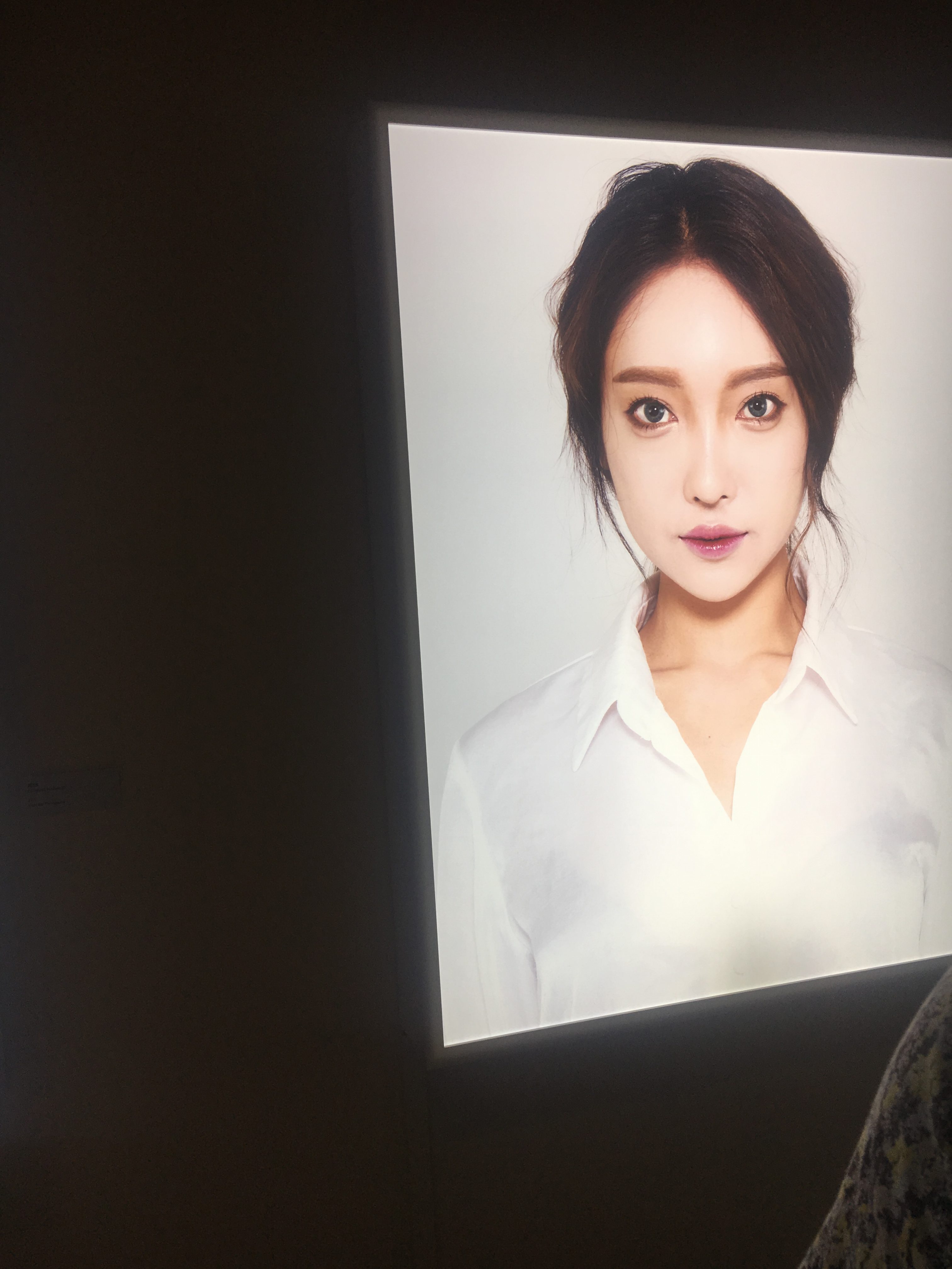 One work that caught my eye was ‘Fake I Real Me’ by Corinne Mariaud. It consists of 3 pictures of South Korean women who cares about their outer appearances alot and has had plastic surgery done before to look ‘prettier’.
One work that caught my eye was ‘Fake I Real Me’ by Corinne Mariaud. It consists of 3 pictures of South Korean women who cares about their outer appearances alot and has had plastic surgery done before to look ‘prettier’.
When I first saw them, I found them to be creepy looking as their eyes looked too huge (almost to the extent where they look like dolls) and devoid of emotions. It makes me a little crept out. They look beautiful but to me, they looked beautiful in a ghost like way. When I first saw it, I thought it has something to do with beauty standards and plastic surgery. I think it touches on how looks have become more and more important such that some would go lengths to physically alter themselves. I think it is a critique on pressing beauty standards and increasing superficiality in our society. I think the simplicity of the work made it possible to gather such information-it is just three women and the most striking thing about them is their flawless beauty. I think the fact that it is very simple portraits of them that adds another layer to the artwork because portraits like this typically show people in their most natural state (poker faced, expressionless) but there is nothing natural about their features since they have gone under the knife before and emphasises on the fact that these are alterations to what was natural.
After reading text, I confirmed what I had inferred but I think that it might be because I am interested in korean culture and know what is the korean beauty standards. If a viewer does not have prior knowledge, it may be hard to understand the work. I think that if the artist added perhaps marks (the ones they draw on you before they cut you up for plastic surgery) that are not so visible from afar to the face and obvious as one approaches the artwork, it would be perhaps more effective but it may be too obvious and take away the subtlety and simplicity (which I find to be the stunning point) of this artwork.
The next artwork is ‘The Optimisation of Parenting part 2’ by Addie Wagenknecht and it consists of a mechanical arm rocking a baby cot. My first impression was that it felt lonely? I felt quite sad because I would expect seeing a mother beside a cot but inside it is a mechanical arm and there is a lack of parental warmth which I find a pity. I thought that it would be about the lack of time resulting in parents turning to machines to take care of their children and a critique on the reliance on machinery. The juxtaposition of the cozy baby’s cot and the rigid mechanical arm (between life and a mimicry of life) directs me towards the direction of machinery replacing us in carrying out tasks even the most intimate and the consequences of it.
After reading the text, I realised that I was partly wrong. The artist is much more optimistic and even supportive as she stands in the shoe of a busy parent and question if small tasks like rocking a cot can be handed to robots. The artist also questions if this will affect the child’s growth.
I think that if she wants to emphasise on the parent being relieved of her duty, she can add a pair of female hands alongside the robot’s doing her work and the lighting can be less harsh. The harsh lighting makes it look sad and devastating.



